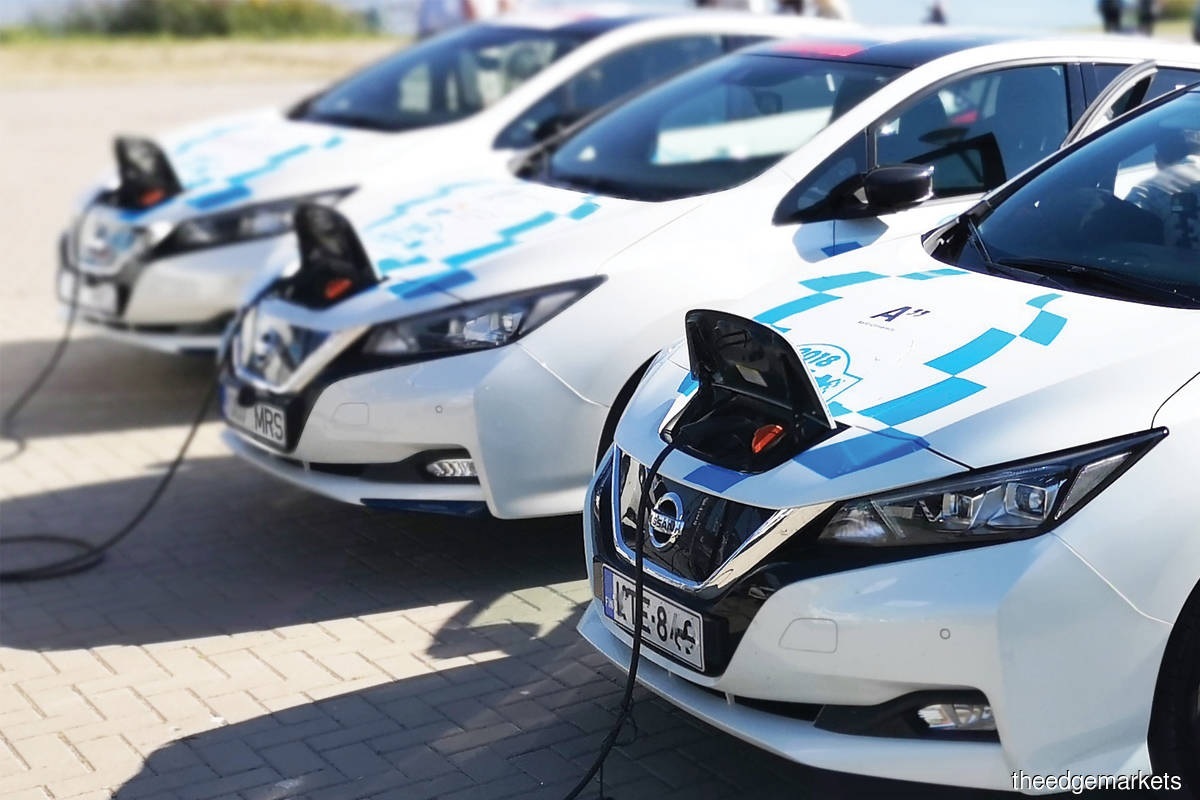Heavier weight of electric vehicles could cause car parks to collapse, says UK report

- British Parking Association: If a vehicle is heavier than the car park was originally designed for, the effects could be catastrophic. We’ve not had an incident yet, but I suspect it is only a matter of time.
KUALA LUMPUR (Dec 21): Multi-storey and underground car parks in the UK could collapse with the increasing weight and greater popularity of electric vehicles (EVs), stated the British Parking Association (BPA) recently.
In a report by The Daily Mail electric cars are about twice as heavy as standard vehicles and they could in future damage car parks.
“If a vehicle is heavier than the car park was originally designed for, the effects could be catastrophic. We’ve not had an incident yet, but I suspect it is only a matter of time.
“We have recommended that a loading check is performed on all older car parks. And the industry is responding,” structural engineer and a member of the BPA, Chris Whapples told the daily.
Many earlier reports have highlighted that EVs are heavier owing to the batteries used as the main power source together with the reinforced framework and suspension needed keep the car in working order.
According to The Daily Mail report, the majority of the UK’s multi-storey and underground car parks “were built according to guidance based on the weight of popular cars of 1976 including the Mk 3 Ford Cortina”.
“But the electric cars currently on the UK market are far bulkier. For instance, the best-selling Tesla Model 3 weighs 2.2 tons fully loaded, making it more than 50 per cent heavier than a 1.4-tonne Cortina,” it added.
The report also stated that UK’s Institute of Structural Engineers will “update its design recommendations for multi-storey and underground car parks in January, to recommend larger parking bays and an ability to withstand increased loads”.
But this will only involve new buildings as reinforcing existing car parks could be “prohibitively expensive”.
Meanwhile, CEO of green motoring consultancy New AutoMotive, Ben Nelmes has a contrarian view.
“The best-selling petrol/diesel cars in the UK range from the Nissan Qashqai to the VW Golf 8 and the Kia Sportage which weigh between 1.4 and 1.7 tonnes. The best-selling electric car, the Tesla Model Y, weighs 1.6 tonnes and the electric Mini weighs the same as a Mini Cooper at 1.3 tonnes.
“Both electric models are within or under the weight range of the most popular petrol/diesel cars and yet the BPA continues to focus on the weight of the batteries inside electric cars as being the cause for concern, while coincidentally forgetting to flag that batteries are getting lighter and lighter,” Nelmes told The Daily Mail.
“Perhaps the BPA should be more worried about a rise in SUVs such as the Land Rover Discovery, introduced into the UK in 1989, and which weigh 2.4 tonnes.
“We can have confidence that the UK's parking garages will withstand electric cars. It is the BPA's arguments that are at risk of collapse,” Nelmes added.
Countries and authorities around the globe are pushing for the increase in EV use. This also include amenities to facilitate their operation such as charging areas.
The California Energy Commission (CEC) recently approved a US$2.9 billion (RM12.87 billion) investment plan to accelerate the state's 2025 EV “charging and hydrogen refueling goals”, according to a report by Reuters.
The investment will result in 90,000 new EV chargers, more than double the 80,000 chargers already installed in the state, stated the energy commission.
California wants to have up to 250,000 chargers available by 2025.
In Malaysia, the target is to have 38% of total sales volume made up of EV and hybrid by 2040.
“We are currently committed to driving efforts to attract EV investments and meeting the national target of 15% total industry volume (TIV) for EV and hybrid by 2030 and 38% of TIV by 2040. In terms of charging infrastructure, the goal is to have 10,000 public charging stations by 2025,” said minister of international trade and industry, Tengku Datuk Seri Zafrul Tengku Abdul Aziz in a report by paultan.org recently.
“The government strongly supports the EV agenda to ensure a dynamic and more sustainable future for all Malaysians. The National Automotive Policy, or NAP 2020, and Low Carbon Mobility Blueprint outline the government’s direction in the development of the nation’s EV industry,” he added.
Never miss out
Sign up to get breaking news, unique insights, event invites and more from EdgeProp.
Latest publications
Malaysia's Most
Loved Property App
The only property app you need. More than 200,000 sale/rent listings and daily property news.
